Wednesday, July 29, 2015
Thursday, July 16, 2015
The Year of Pluto - New Horizons Documentary ...
Published on Jun 12, 2015
New
Horizons is the first mission to the Kuiper Belt, a gigantic zone of
icy bodies and mysterious small objects orbiting beyond Neptune. This
region also is known as the “third” zone of our solar system, beyond the
inner rocky planets and outer gas giants. Johns Hopkins University
Applied Physics Laboratory (APL) in Maryland, designed, built and
operates the New Horizons spacecraft, and manages the mission for NASA’s
Science Mission Directorate in Washington. The Year of Pluto - NASA
New Horizons is a one hour documentary which takes on the hard science
and gives us answers to how the mission came about and why it matters.
Interviews with Dr. James Green, John Spencer, Fran Bagenal, Mark
Showalter and others share how New Horizons will answer many questions.
New Horizons is part of the New Frontiers Program, managed by NASA’s
Marshall Space Flight Center in Huntsville, Alabama.
FEATURED ART OF THE DAY!!
Title: Voyager
Digital Art
During the climax of the film Star Trek, the Motion Picture it was revealed that an ancient space probe from the planet Earth known as Voyager had returned after alien contact and hundreds of years. V-Ger (Voyager) intended to reunite with its creator. Do you think this is possible?? Do you know where Voyager is now?? Goto voyager.jpl.nasa.gov to find the answer!!
By Shawn-Todd O'Malley
Original Art by Shawn-Todd O’Malley
Visit me on my Art Gallery on Facebook!
Here is a link:
http://www.facebook.com/

Digital Art
During the climax of the film Star Trek, the Motion Picture it was revealed that an ancient space probe from the planet Earth known as Voyager had returned after alien contact and hundreds of years. V-Ger (Voyager) intended to reunite with its creator. Do you think this is possible?? Do you know where Voyager is now?? Goto voyager.jpl.nasa.gov to find the answer!!
By Shawn-Todd O'Malley
Original Art by Shawn-Todd O’Malley
Visit me on my Art Gallery on Facebook!
Here is a link:
http://www.facebook.com/

7 Fascinating Facts We Just Learned About Pluto
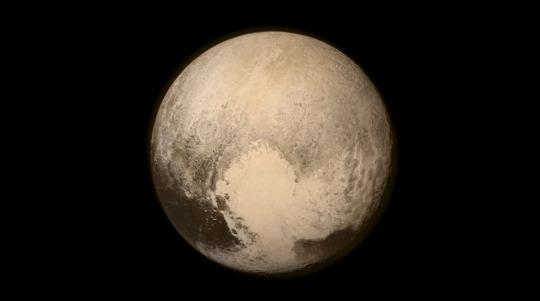
(NASA)
Fasten your seat belts, space cadets: We’re officially in the final countdown to NASA’s 3-billion-mile journey to Pluto.
Pluto
was actually still a planet when the space agency launched the mission
in early 2006. (In case you’ve been living in a crater for the past nine
years, Pluto was unceremoniously demoted due to its size that same
summer. It’s now considered a “dwarf planet” — which I’m assured by our
HR department is a perfectly acceptable term to use — or a “plutoid,” if
you’re feeling politically correct.)
Today, the agency’s unmanned New Horizons spacecraft is
in a galaxy far, far away — or, at least, at the edge of our solar
system. Earlier this morning it brushed up against the former planet’s
private space, coming within 8,000 miles of the dwarf — err, plutoid.
While we won’t get the full scope of NASA’s findings for a while,
details about the enigmatic Pluto are slowly but surely trickling in.
Behold: seven titillating tidbits we just learned about everyone’s favorite dwarf planet.
1. It may be a dwarf, but Pluto measures up better than we thought
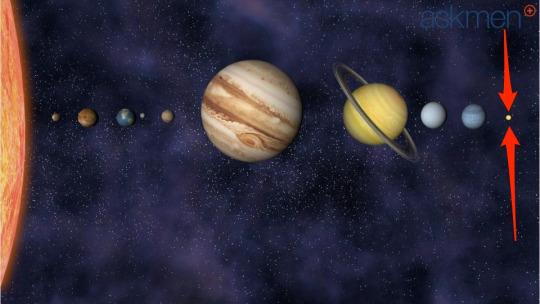
(Wochit)
Early measurements indicate Pluto has a diameter of about 1,473 miles
— the equivalent of nearly 22,000 football fields stacked end to end.
That’s about 44 miles more than scientists’ previous starting estimate.
Here’s
what really counts: The new measurement means Pluto is now considered
the largest solar system object beyond Neptune’s orbit. It’s less dense
than we thought, too, with an icier interior.
See? Size does matter.
2. Pluto has strong gas
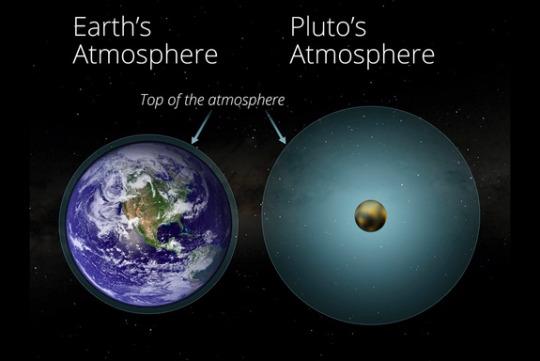
(PlutoSafari.com)
That
isn’t Uranus you’re smelling, folks: NASA scientists have confirmed
they’ve found nitrogen seeping out of Pluto’s atmosphere. The nitro
showed up a full four days earlier than the team had expected, which
suggests Pluto could be losing its atmosphere faster than previously
believed.
It also explains why Pluto never gets invited to any interplanetary dinner parties.
3. Pluto’s wearing a stylish ice cap

(Associated Press)
Speaking
of gas, New Horizons has revealed that Pluto’s so-called polar cap is
actually made up of ice — frozen methane and nitrogen, to be specific.
So let’s all just chill for a minute, OK?
4. Pluto has a heart — and a whale
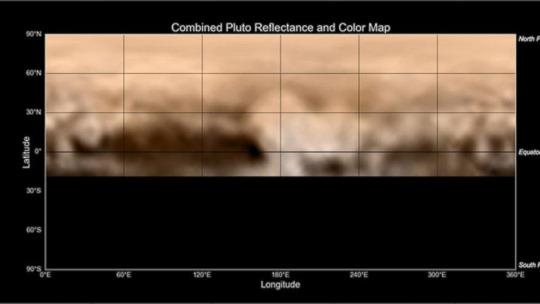
(ABC News)
Among the geographical features observed on Pluto’s surface are a “whale” — a dark band along the plutoid’s equator, complete with a tail-like attachment — and a bright heart
to keep everyone feeling warm and fuzzy inside. It’s too soon to know
what either shape represents, but we’re holding out hope for a colony of
super-affectionate alien sea creatures.
5. It also has cliffs and craters
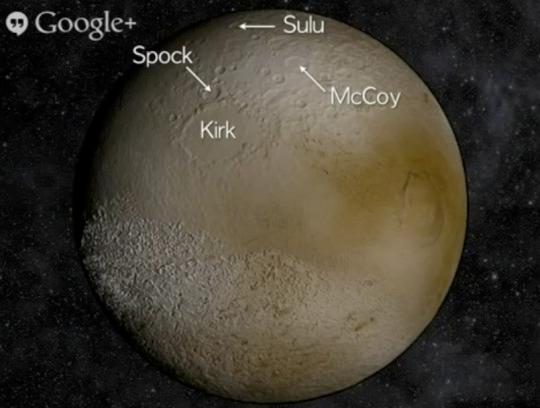
(SETI Institute/Space.com)
Some of the craters could be signs of impact, formed from smaller objects slamming into Pluto’s surface. Once again, all the big planets are ganging up on the little guy.
To make up for this solar-systemic bullying, researchers are thinking about naming some of Pluto’s craters after characters in Star Trek. No, really — they are.
6. Some of Pluto’s spots are even more mysterious
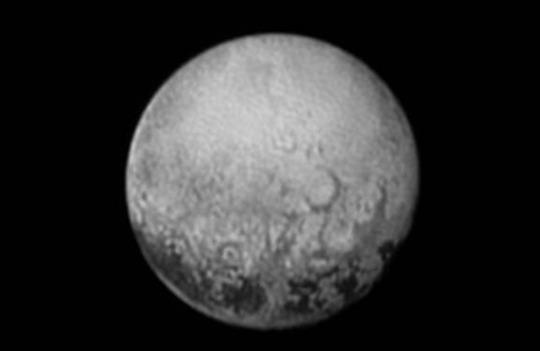
(Space.com)
Forget the cliffs, craters, and whales (oh my!): What scientists really want to understand is what’s going on with a series of dark spots
seen on Pluto’s side. The spots are closely aligned in size and spacing
— an effect NASA experts describe as “weird” (that’s the technical
term).
We understand NASA’s next mission to Pluto will include a payload of Porcelana anti-aging cream.
7. Pluto’s moons are, like, superdeep, dude
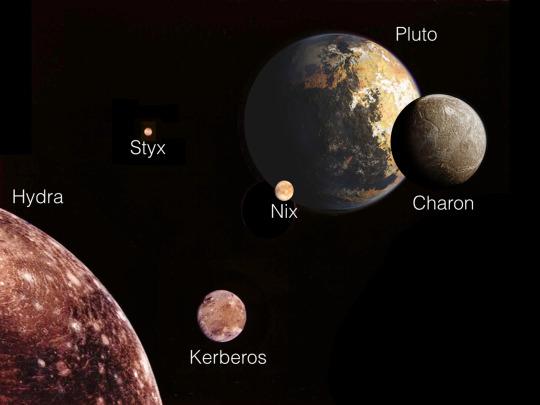
(Associated Press)
Pluto
has five known moons, and we’re learning more about ’em with every
passing day. The largest one — Charon (“Don’t Call Her Sharon”) — is filled with craters. And get this: One of the craters is longer and deeper than our own Grand Canyon.
That’s
all just scratching the planetary surface, ladies and gents. New
Horizons is scheduled to check back in late Tuesday evening after its
fly-by has finished. It may take some time for any sort of final report
to be released, but believe us: The results should be out of this world.
Saturday, June 27, 2015
New Horizons and Pluto
As the Piano-Sized New Horizons Spacecraft Approaches, Pluto and Charon Are Coming Into Intriguing Focus
By Tom Yulsman | June 26, 2015 2:19 pm

Pluto (right) and Charon (left) as seen by the New Horizons
spacecraft on June 19, 2015. (Source: NASA/Johns Hopkins
University Applied Physics Laboratory/Southwest Research
Institute)
The New Horizons spacecraft is about 13 million miles from Pluto and its largest moon, Charon. If that seems really far, consider the image above.
It was captured by the Long Range Reconnaissance Imager instrument, or LORI, when the piano-sized spacecraft was even farther away — 20 million miles, give or take. Yet LORI could begin to pick out some intriguing surface detail on both bodies.
Note the light and dark features on Pluto, to the right, which are indicative of large-scale aspects of the planet’s terrain. (Although Pluto seems to have an irregular shape, that’s an illusion created by the pattern of dark and bright regions.)
And check out that dark region on Charon’s north pole. It has been called an “anti-polar cap” — and for now, it is quite mysterious.
Alan Stern, the mission’s principal investigator, from the Southwest Research Institute, reacted this way:
About Charon—wow—I don’t think anyone expected Charon to reveal a mystery like dark terrains at its pole . . . Who ordered that?”
Now, New Horizons is just 17 days out from its closest encounter with Pluto. If all goes well (and a lot could go wrong!), on July 14 the spacecraft will swoop to within about 7,750 miles of Pluto (17,900 miles of Charon). For about a half hour, it will take close-up pictures in both visible and near-infrared wavelengths — images that should be able to resolve surface features as small as 200 feet across.
So if there’s a football stadium on Pluto, New Horizons should spot it!
New Horizons is also beginning to beam us images that are being made into the first color movies of Pluto and Charon. Here’s one:

A near-true color movie of Pluto and Charon made from images acquired by an instrument
on New Horizons known as “Ralph” (a reference to the television show the Honeymooners).
The images were taken on nine occasions between May 29 and June 3, 2015. (Source:
NASA/Johns Hopkins University Applied Physics Laboratory/Southwest Research Institute)
This movie is Pluto-centric,” meaning Charon is shown as it moves in relation to it. Charon makes one orbit around Pluto every six days, nine hours and 17.6 minutes — which is the same amount of time it takes Pluto to make one complete turn on its axis.
As Pluto spins, note the shifts in the brightness of those pixels. This is indicative of the brighter and darker terrains on the planet’s different faces. It will be so cool to see what Pluto’s topography looks like close up — and in color!
Assuming, of course, that all continues to go well with New Horizons and it arrives at Pluto as planned. This would be no small feat, as Alexandra Witze pointed out in an excellent article published in the journal Nature yesterday.
The headline pretty much sums up the challenge: “Pluto-bound probe faces its toughest task — finding Pluto.” As Witze puts it:
“Because astronomers discovered the dwarf planet in 1930, they have seen only part of its 248-year path around the Sun, and they don’t know exactly where Pluto is. And New Horizons is so far from Earth that it takes 9 hours to send and receive a signal, making the spacecraft hard to direct in real time.
The New Horizons team will get only one shot at finding Pluto. So far so good. And keep your fingers crossed!
Ninjai: The Little Ninja
Here's an update from one our favorite animated teams:
Hey friends and fans,
We have posted a quick update for the Ninjai film project and the upcoming Kickstarter on Ninjai.com to keep you guys in the loop. We really want to let you guys know that things are moving forward and we’ll continue to keep you updated as we are getting close. We have to say that we are pretty excited about sharing everything with you guys.
Check out the new update at http://www.ninjai.com/…/update-fans-ninjai-feature-film-pro…
Thanks
the Ninjai Gang

Super Balls
Our game project Super Balls. Match the color of the balls by clicking on the individual balls. Match any 5 colors in conjunction with the particular mission parameters and you'll complete the level. This game contains about 10,000 individual levesl and over 200 individual missions.
WANT TO KNOW MORE?? https://www.facebook.com/FightingIrishStudios

WANT TO KNOW MORE?? https://www.facebook.com/FightingIrishStudios

FEATURED ART OF THE DAY!!
Title: The Dark Knight
Digital Art
By Shawn-Todd O'Malley
Original Art by Shawn-Todd O’Malley
Visit me on my Art Gallery on Facebook!
Here is a link:
http://www.facebook.com/

Digital Art
By Shawn-Todd O'Malley
Original Art by Shawn-Todd O’Malley
Visit me on my Art Gallery on Facebook!
Here is a link:
http://www.facebook.com/

Wednesday, June 24, 2015
Hydrogen Leak!!
An immense cloud of hydrogen is seen bleeding from a planet orbiting a nearby star:
Want to know more?? http://go.nasa.gov/1LCgN2l

Want to know more?? http://go.nasa.gov/1LCgN2l

Tuesday, June 23, 2015
STAR WARS 1977, the video game
Star Wars was one of my favorite movies as a young boy. I remember the immense impact it had on me and how this fantastic movie literately changed my childhood vision of the world around me. I have a great love for space and all things astronomical now and put forth great effort to teach myself and my children about the planet upon which we live and the solar system in which we dwell. I remind them how vast the universe is and of the many mysteries that are hidden away among the billions of planets and stars that reside within. As a tribute to Star Wars and the many Star Wars Fans ( and the creative vision of George Lucas ), I decided to create my own Star Wars video game. Based on the old 1945 airplane shooter style of video games i wanted to create a fast paced arcade style game reminiscent of those early days of my youth. I am pleased with the results. Star Wars 1977 is truly too much fun. Coupled with Star wars props, space and planet landscapes, and a pre-episode IV story line....Star Wars 1977 holds true to the love I have for the franchise. Even though I am truly dedicated to the completion of Wizard World and it is our number one priority I have decided to release this game first. It is 24 levels of simple and fun game play ( complete with power-ups and boss battles ) and is complete. It only lacks some original artwork ( for back drops) that I am currently working on. so in a few weeks I should complete the artwork...and in a few months ( after extensive third party game testing ) I should release the full game, FREE, to who ever wants to play. This is truly a labor of love for me. I hope you enjoy. I will add additional screen shots to this project soon. Thanks for the Support. https://www.facebook.com/StarWars1977theVideoGame


Grayson: Earth One
We always like to share provocative takes on familiar stories. What do you think of this action packed, hardcore version of the boy wonder, Robin aka Nightwing??
This is a non profit project made purely for exhibition.
Series Synopsis: "Grayson: Earth One' is the re-imagined origin story of the hero known as Nightwing/ Richard Grayson. The series takes place in a new continuity on a new Earth separate from the DC Universe, freeing it from continuity restraints.
"Grayson: Earth One" season one is a non profit six episode season dedicated to exploring the origin story of the DC character known as Nightwing -- but with a twist. The twist being that Richard Grayson has never had the good fortune of being adopted as a child by Bruce Wayne, thus never becoming the boy wonder. Instead, we have a Richard Grayson that had to fend for himself on the unforgiving streets of Gotham and, even worse, the streets of Bludhaven. A character that has to overcome years of dog eat dog mentality to become a selfless and kind individual. To ultimately fulfill his destiny and become a HERO.
Of course, changing that single event within Richard Grayson's life sends a ripple across the entire DC universe. It changes the history of characters such as Bruce Wayne, Barbara Gordon, Helena Bertinelli and their adversaries too.
Why is change a good thing? Simply put, we wanted to tell a story that involves characters that are beloved, but also wanted a story that the audience could not predict based its iconic source material. We would also love to attract people that had no previous interest in the comic book world by grounding these characters into situations that they could relate to. We look forward to creating a new fan base following these awesome comic book characters that we grew up with.
Dark Shadows
Title: Ombres Foncées #4
Original Art by Shawn-Todd O’Malley
Visit me on my Art Gallery on Facebook!
Here is a link:
http://www.facebook.com/ShawnToddOmalley

Original Art by Shawn-Todd O’Malley
Visit me on my Art Gallery on Facebook!
Here is a link:
http://www.facebook.com/ShawnToddOmalley

Starships and Blackholes
What if we could power a starship with a mini-black hole?
That's the idea behind the theory of "Kugelblitz" -- which translates literally to "ball lightning." If enough pure energy could be focused into a region of space, that energy would form a microscopic black hole, we could travel at nearly the speed of light and actually reach neighboring stars and planets within our lifetime!
Here's how it would work >> http://bit.ly/1b3d3na

Wizard World
Here are some screen shots of our new video game Wizard World. This game is currently still under development. It is nearing its Beta version demo which will be released to a few people here and there to test for us. Artwork is still being created to replace filler sprites and back grounds (sprites and backgrounds borrowed to fill in until we have developed our own). Programing is nearly 80 percent complete and the game is completely playable at this point. A few glitches still remain. We anticipate a warm welcome for this game as it has been well received by early testers. More screen shots to follow but don't expect to much info as we don't want to give away too much of the story and plot. Thanks for your interest. Wizard World is Copyright 2013 Fighting Irish Studios and Shawn Todd O'Malley. all rights reserved. https://www.facebook.com/FightingIrishStudios


FEATURED ART OF THE DAY!
Title: "Skywalker Ranch"
Digital Art
Something for the Star Wars fans.
By Shawn-Todd O'Malley
Original Art by Shawn-Todd O’Malley
Visit me on my Art Gallery on Facebook!
Here is a link:
http://www.facebook.com/ShawnToddOmalley
Original Art by Shawn-Todd O’Malley
Visit me on my Art Gallery on Facebook!
Here is a link:
http://www.facebook.com/ShawnToddOmalley

Spray-painting an asteroid
Did you know that spray-painting an asteroid might alter its path (and save Earth!)? It's called the "Yarkovsky Effect."
In 1902, Ivan Yarkovsky suggested that the daily heating of an object rotating in space could exert a small force on the object. By spray painting a certain part of an asteroid or all of it, either with light or dark paint (depending on what you want to do), you can modify its trajectory and gently, oh-so-gently, push it into a safer trajectory. This isn't the kind of technique that would be used when there's imminent danger, but it could be used as a preventive way to nudge near Earth objects away from the only planet we have.
Learn more here >> http://bit.ly/14NEpw2
Learn more here >> http://bit.ly/14NEpw2

Subscribe to:
Posts (Atom)
